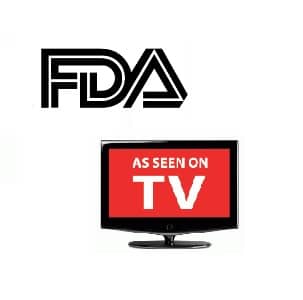By Brian Taylor, AuD
If you watch the evening news on broadcast television you are likely well aware of the omnipresence of pharmaceutical advertising. Recently, the US Food & Drug Administration (FDA) announced plans to evaluate if older Americans are able to sufficiently hear the many health risks mentioned in these all-too-common television advertisements.
Given the prevalence of hearing loss in older adults and the increased popularity of prescription medications by adults to counteract the effects of aging, the FDA will embark on this study to better understand how direct-to-consumer television pharmaceutical advertising (which relies mainly on audio-only presentation of potential risk factors) is heard and understood by older Americans.
A Much-Needed Study
This study and others like it have captured the attention of researchers in audiology and hearing science. Professor Barbara Weinstein, PhD, from the CUNY Graduate Center said this about the importance of assessing the risks posed by misunderstanding pharmaceutical ads on TV:
“Age related hearing loss (ARHL) due to peripheral, cognitive and central changes impairs the ability to understand the meaning of everyday language. Older adults with ARHL are at a considerable disadvantage as consumers of unfamiliar medical concepts/terminology and risk information especially when spoken at a rapid pace.
This leads to what Dr. Oliver Sachs recently described in a New York Times article as ‘mishearings’ (e,g. pontillitis rather than tonsillitis; all-or-noneness instead of oral numbness; choir practice instead of chiropractor; or a big-time cuttlefish diagnosed with A.L.S. rather than a big-time publicist diagnosed with A.L.S.). These ‘mishearings’ are also the result of impaired encoding in the periphery (bottom up processing) which requires extra cognitive processing effort, limiting the resources available for encoding the content of the spoken message into memory (top down processing).”
Potential Changes Looming?
Current FDA regulations require pharmaceutical companies to adhere to the regulatory requirement of fair balance. This entails the inclusion of adverse product information (namely the contraindications, warnings, precautions and adverse reactions) along with indications and directions for use of the products.
Weinstein went on to say, “Older adults with low health literacy are further disadvantaged because of the link between health literacy, visual and auditory difficulties. In light of the growth rate of the older population, increased life expectancy and increased prevalence of hearing loss with age, this study being mounted by the FDA is likely to have cascading beneficial health and economic effects potentially associated with reductions in adverse events.”
Details of the study were recently published at the Federal Register on June 24.







